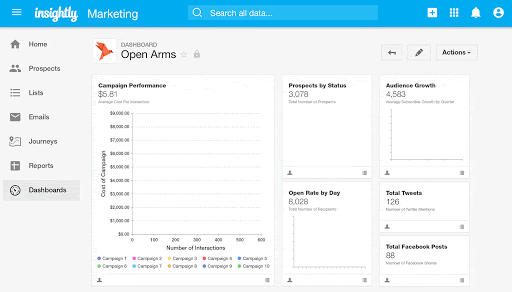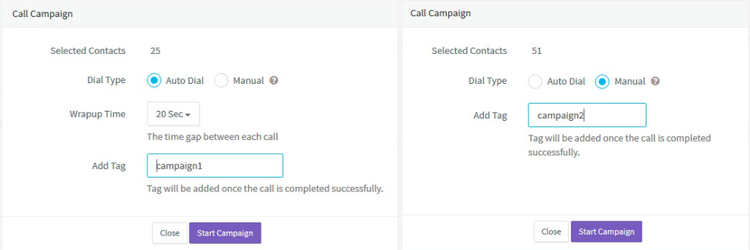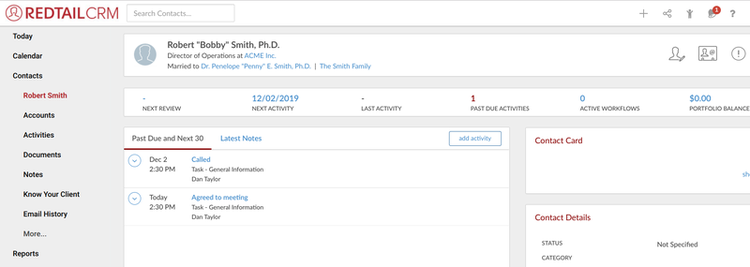Even under the best of circumstances, increasing sales revenue and growing your customer base is a priority. Due to today's volatile economic environment at both the macro and micro levels, however, it's more critical than ever before.
That's why you must implement an effective sales prospecting plan not just for your small business to thrive but to survive.
Here's how you create an effective sales prospecting plan:
- Qualify your leads
- Identify the decision-maker
- Set up a meeting
- Listen to your prospect
- Close the sale
Overview: What is prospecting?
Sales prospecting is the initial step of the sales process: identifying potential customers, that is, from your prospect pool. The goal is to build a database of probable customers and then communicate with them to convert them into current customers.
Sales prospecting is applicable primarily to business-to-business (B2B) sales as opposed to business-to-consumer (B2C) sales.
That's because the sales cycle of one business selling to another is typically longer, involves more than one person in the decision-making process, and creates an ongoing business relationship following the sale.
Lead vs. prospect: what’s the difference?
A key distinction to keep in mind is the difference between a lead vs. a prospect. A lead is a potential customer who has demonstrated interest in your products or services. This interest can be demonstrated through a business card collected at a trade show, a query submitted online, or even signing up for an e-book or webinar offered by your business.
A lead becomes a prospect once you've determined their needs and available resources align with your predefined buyer personas and target market.
Sales prospecting methods your small business can try
When it comes to sales and customer prospecting, one critical thing to remember is that this is an ongoing process, not a one-off activity. In addition, there's no "one" way to capture new prospects. Instead, use each of these four sales prospecting techniques below to cast a wide yet productive net.
1. Inbound marketing
Inbound marketing draws customers to your products and services through social media, content marketing, and search engine optimization as well as your overall branding. To successfully employ inbound marketing, you'll also need to use customer engagement software to capture information about potential prospects as well as overarching data metrics.
2. Referrals
In some ways, referrals are the opposite of inbound marketing. That is, instead of trying to organically attract customers to you, ask existing customers to provide an introduction to likely prospects.
Of course, that requires you maintain good, long-lasting relationships with your clients. To that end, consider using complaint management software to quickly resolve issues as they arise to optimize your customer relationships.
3. Networking
In addition, your sales team should do more than hustle for sales 24/7 because they're also part of the larger community that makes up the industry you're in. That means going to industry conferences, demonstrating subject-matter expertise online and in person as a part of industry-wide conversations, and generally rubbing elbows.
Here's another thought: Any pro bono, charity, or nonprofit work you and your sales team perform can result in productive new contacts as well as a high degree of goodwill toward your company.
4. Outbound sales
Outbound sales, typically consisting of cold calling (or emailing) potential customers out of the blue, are most sales people's least favorite task. So don't do it. Instead, try warm calling: contacting those prospects that you've already established a rapport with via the three methods above.
How to implement a prospecting plan
Once you have a group of leads, the five simple but effective steps below will convert the most promising ones into actual sales prospects.
Step 1: Qualify your leads
As noted above, lead qualification is what converts someone who's demonstrated interest in your products and services into an actual sales prospect. That means you have to determine if they're a good fit for what you can do.
Can you fulfill what they need? Is the potential revenue worth your while? Is the time frame for a sale and/or implementation realistic? Even better, implement a formal lead scoring process to objectively determine your viable prospects.
Step 2: Identify the decision-maker
Your sales team has a limited amount of time each day, so they have to make the most of it. Once you've lead scored a potential B2B client, you must identify the key decision-maker as soon as possible. In addition, try to determine if this person can be an advocate for you within the company or if you need to scout out someone else for that role.
Step 3: Set up a meeting
After you've done your initial research -- lead scoring and determining who you need to talk to close a deal -- now it's worth your while to reach out for a meeting. Perhaps this is in person, maybe it's a phone call, or via video conferencing.
No matter what, prepare a sales deck with your key talking points to either go over formally or even informally as the situation allows.
Step 4: Listen to your prospect
Ever been on the receiving end of a sales pitch where you couldn't get a word in edgewise? Trust us: Nobody responds well to that. Knowing how to close a sale also means knowing how to ask questions as well as listening to the answers.
Of course, that requires asking real, open-ended questions, not just rhetorical ones, as part of an actual conversation with your prospect instead of a one-sided monologue.
Step 5: Close the sale
In the end, being a good salesman means closing the deal. The first part of that requires addressing any concerns, small or large, posed by your prospect. After that? Ask for the sale.
The biggest mistake most salespeople make, usually from a fear of rejection, is not explicitly asking for the sale. And without that, how's it going to happen? Plus, even if things do go south, remember: Failure is just the production of unexpected knowledge.
The best sales prospecting tools
The days of scribbling hard-to-read information on the back of business cards as your primary lead management system are long gone.
Instead, you should be a prospecting tool such as customer relationship management (CRM) software to facilitate your sales prospecting. Plus, using CRM software will allow your sales team to maximize the results from the entire sales funnel.
1. Insightly
Insightly is The Ascent's top-rated CRM software provider thanks to its advanced sales and marketing automation features.

Insightly's marketing dashboard tracks the performance of your campaigns as well as the number of sales prospects and their status. Image source: Author
In addition, it provides great customer support, is suitable for businesses of all sizes, and even has a "forever free" plan that allows two user accounts.
2. Agile CRM
The Ascent has rated Agile CRM as the best value for small businesses due to the robust features contained in its free version as well as the competitive pricing of its monthly and annual plans.

Agile CRM lets you make customer phone calls from within its interface. Image source: Author
Importing your customer contacts will be quick and easy, and you'll find its seamless integration with third-party email providers as well as Skype useful when sending a follow-up email or making a phone call.
3. Redtail CRM
Of course, ease of use for all members of your sales team is critical, and The Ascent's choice in that area is Redtail CRM.

Redtail CRM contact records can include detailed information such as a nickname, marriage status, and portfolio value as well as a task list. Image source: Author
It has an easy-to-navigate dashboard, solid customer service, email archiving, and the ability to create contact records with detailed information to track your sales leads.
Implement your sales prospecting plan now
Sales are the lifeblood of your business and are too important to leave to chance or ad hoc sales tactics. In addition, once you implement the five steps above, your sales forecasting, an integral part of your ongoing business intelligence analysis efforts, should be significantly more accurate.
Our Small Business Expert
We're firm believers in the Golden Rule, which is why editorial opinions are ours alone and have not been previously reviewed, approved, or endorsed by included advertisers. The Ascent does not cover all offers on the market. Editorial content from The Ascent is separate from The Motley Fool editorial content and is created by a different analyst team.